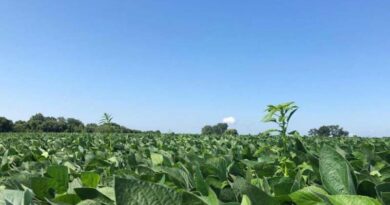
K-State Research Team Studying Ways To FInd Value In Wastewater
22 November 2025, Manhattan: Agricultural economist details the university’s efforts to conserve the Ogallala Aquifer by finding value in every drop
Kansas State University researchers are leading an innovative effort to turn livestock wastewater into a reusable resource in a project that helps to conserve the Ogallala Aquifer and strengthen sustainability across the High Plains.
The four-year, $6 million project, led by Prathap Parameswaran, an associate professor in K-State’s Carl R. Ice College of Engineering, brings together engineering, agricultural economics and social science experts from K-State, the University of Nebraska-Lincoln, Oklahoma State University and Seward County Community College.
At the center of the work is an anaerobic membrane bioreactor that treats wastewater from livestock operations so that it can be reused, while also recovering nutrients and generating biogas for on-farm energy.
“The crux of what we’re doing is about water access,” said Joe Parcell, professor of agricultural economics at K-State. “We’re creating a process to polish and clean water up enough so that it can be reused in the livestock system. At the same time, we’re also pulling in those carbon and nutrient elements to try and add value so it becomes more widely adopted.”
On a recent episode of Agriculture Today, a podcast produced by K-State Extension, Parcell explained that adding value to wastewater is key to making the technology feasible for producers.
“We’re working on the ability to add value to wastewater,” he said. “When producers see the economic and environmental benefits, they’re more likely to adopt and integrate it into their operations.”
The project aims to reduce freshwater use, manage waste more efficiently, and create new incentives for livestock producers to invest in sustainable technology.
“Part of the adoption equation is where you are at, and how far do you have to pump water now? What are the policies and incentives going to be?” Parcell said. “We’ve seen incentives to install these types of facilities in the past. What will they look like in the future?”
By capturing nutrients and reusing treated water, livestock operations could improve efficiency, reduce costs, and contribute to long-term aquifer protection. Parcell said that collaboration between researchers, producers, and policymakers will be critical to ensure that conservation practices are practical and economically sound.
“At the end of the day, it’s about finding that balance between sustainability and profitability,” he said. “If we can help producers make decisions that benefit both, we can make a real impact on how water is managed across the region.”
Also Read: Punjab’s Water Crisis: Experts Say Hybrid Seeds Are the Only Sustainable Solution
📢 If You’re in Agriculture, Make Sure the Right People Hear Your Story.
From product launches to strategic announcements, Global Agriculture offers unmatched visibility across international agri-business markets. Connect with us at pr@global-agriculture.com to explore editorial and advertising opportunities that reach the right audience, worldwide.






